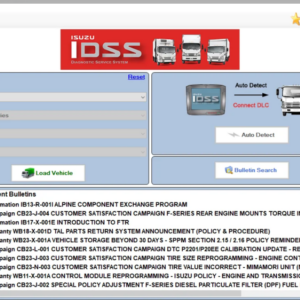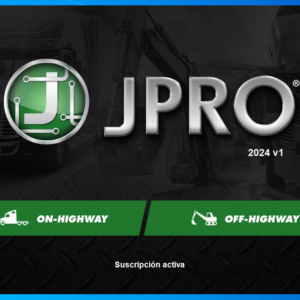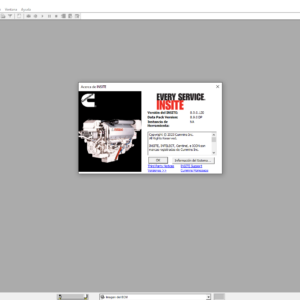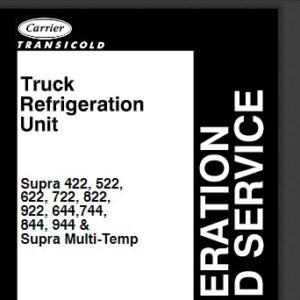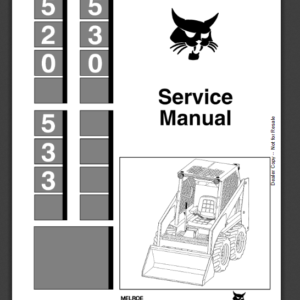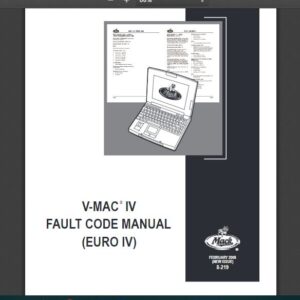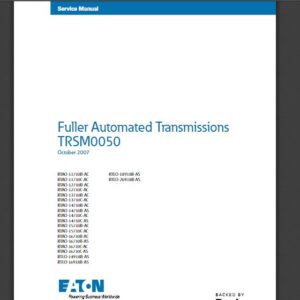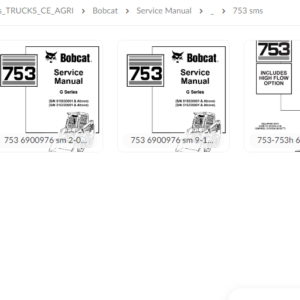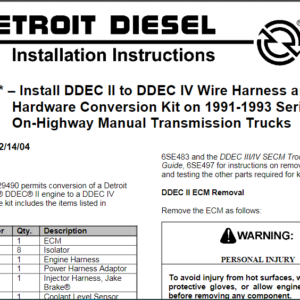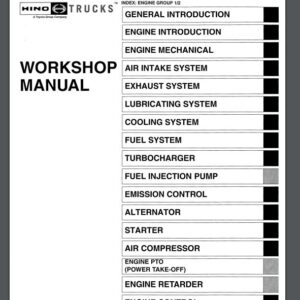Volvo All Engines (2004 Emissions) Fault Code: PID 354 FMI 5 Intake Air and Humidity Sensor
Fault Condition: The Electronic Malfunction Lamp (EML) will turn on and PID 354 will set when the EMS Module senses that the Intake Air Temperature and Humidity (IATH) Sensor signal voltage is less than 0.4 volts or greater than 4.2 volts. If the Intake Air Temperature and Humidity (IATH) Sensor voltage returns to between 0.4 volts and 4.2 volts, the fault will become inactive.
Note: To ensure that condensation on the sensor has been removed, diagnostics can only be performed after the engine has run for 5 minutes or more.
Run the engine for 5 minutes or more and then use a diagnostic computer to monitor the relative humidity portion of the sensor. If the relative humidity portion of the sensor displayed on the diagnostic tool accurately reflects the actual humidity, the fault has become inactive. Check the connectors at the Intake Air Temperature and Humidity (IATH) Sensor and the Engine Management System (EMS) Module for proper connections.
Possible repairs:
Turn the ignition key OFF first.
1) Disconnect the Intake Air Temperature and Humidity (IATH) Sensor. Disconnect Engine Management System (EMS) Module connector A. Check for continuity between EMS Module connector A pin 7 and IATH Sensor harness
connector pin 1. If there is NO continuity, locate and repair the open between IATH Sensor connector pin 1 and EMS Module connector A pin 7.
2) Disconnect the Intake Air Temperature and Humidity (IATH). Disconnect Engine Management System (EMS) Module connector A. Check for continuity between EMS Module connector A pin 23 and IATH Sensor harness connector pin 2. If there is NO continuity, locate and repair the open in the IATH Sensor signal line.
3) Disconnect the Intake Air Temperature and Humidity (IATH). Disconnect Engine Management System (EMS) Module connectors A and B. Check for continuity between EMS Module connector A pin 23 and all the other pins on EMS Module connectors A and B. If continuity exists, the signal line is shorted to one of the other EMS Module circuits. Locate and repair the short circuit. If there is NO continuity, there is a short circuit to ground somewhere else in the harness. Locate and repair the short circuit to ground.
4) Disconnect the IATH Sensor and the Engine Management System (EMS) Module connector A. Check for continuity between EMS Module connector A pin 7 and a good ground. If continuity exists, locate and repair the short circuit to ground in the voltage reference line.
5) Disconnect the Intake Air Temperature and Humidity (IATH) Sensor. Disconnect Engine Management System (EMS) Module connector A. Measure the voltage between EMS Module harness connector A pin 7 and a good
ground. If the measured voltage is greater than 0.5 volts present, the IATH voltage reference line is shorted to voltage. Locate and repair the short circuit to voltage.
6) Disconnect the Intake Air Temperature and Humidity (IATH) Sensor harness connector. Disconnect Engine Management System (EMS) Module connectors A and B. Check for continuity between EMS Module harness connector A pin 23 and all other pins on EMS Module harness connectors A and B. If continuity exists, EMS Module harness connector A pin 23 is shorted to one of the other EMS Module circuits. Locate and
repair the short circuit. If there is NO continuity, the sensor signal line is shorted to voltage somewhere else in the harness. Locate and repair the short circuit to voltage.
7) Disconnect the Intake Air Temperature and Humidity (IATH) Sensor. Disconnect Engine Management System (EMS) Module connectors A and B. Check for continuity between EMS Module harness connector A pin 7 and/or 23 and all other pins on EMS Module harness connectors A and B. If continuity exists, the signal line is shorted to one of the other EMS Module circuits. Locate and repair the short circuit.
8) Disconnect the Intake Air Temperature and Humidity (IATH) Sensor. Disconnect Engine Management System (EMS) Module connector A. Measure the voltage between EMS Module harness connector A pin 11 and a good
ground. If the measured voltage is greater than 0.5 volts, the sensor return line is shorted to voltage. Locate and repair the short circuit and replace the EMS Module.
9) Connect the Intake Air Temperature and Humidity (IATH) Sensor. Connect the diagnostic computer. Turn the ignition key ON. Flex the IATH Sensor connector and harness section near the connector. If code PID 354 is NOT present, the ground circuit of the IATH Sensor or harness connector may have been loose. Repair the loose connection.
10) Disconnect the Intake Air Temperature and Humidity (IATH) Sensor. Disconnect Engine Management System (EMS) Module connectors A and B. Check for continuity between EMS Module harness connector A pin 11 and all other pins on EMS Module harness connectors A and B. If continuity exists, pin 11 is shorted to voltage on one of the other EMS Module circuits. Locate and repair the short circuit and replace the EMS Module. If there is NO continuity, replace the EMS Module and retest the system.
11) Replace the Intake Air Temperature and Humidity (IATH) Sensor. Turn the ignition key ON. If PID 354 is still active, reinstall the original IATH Sensor and replace the Engine Management System (EMS) Module. If PID 354 is NOT present, replacing the IATH Sensor has solved the problem. Check all connectors to ensure proper connections.
12) Disconnect the Intake Air Temperature and Humidity (IATH) Sensor. Disconnect Engine Management System (EMS) Module connector A. Visually inspect both sides of the EMS Module harness connector A for a repairable
open. If the pins feels loose, repair the connector. If the connector is NOT repairable, replace the connector. If the pins are making good contact, replace the EMS Module and retest the system.
13) Connect EMS Module harness connectors A and B. Connect the IATH Sensor connector. Turn the ignition key ON. If code PID 354 is still active, replace the EMS Module and retest the system. If code PID 354 is NOT active, the diagnostic procedures have corrected the problem. Check all connectors to ensure proper contact.
-
VOLVO PREMIUM TECH TOOL PTT 2.7.30 Developer + Devtool + INSTALATION VIDEO!
Trucks software $60.00Rated 0 out of 5
Related products
-
Allison 1000 & 2000 Gen 4 P0719 Brake Switch ABS Input Low
1000 & 2000 Gen 4 $50.00Rated 0 out of 5 -
Allison 1000 & 2000 Gen 4 Fault Codes: P0218 Transmission Fluid Over Temperature Condition
1000 & 2000 Gen 4 $50.00Rated 0 out of 5 -
Allison 1000 & 2000 Gen 4 Fault Codes: P0870 Transmission Pressure Switch Solenoid E Circuit
1000 & 2000 Gen 4 $50.00Rated 0 out of 5 -
Allison 1000 & 2000 Gen 4 Fault Codes: U0073 CAN Bus Reset Counter Overrun
1000 & 2000 Gen 4 $50.00Rated 0 out of 5 -
Allison 1000 & 2000 Gen 4 Fault Codes: P0122 Pedal Position Sensor Circuit Low Voltage
1000 & 2000 Gen 4 $50.00Rated 0 out of 5 -
Allison 1000 & 2000 Gen 4 Fault Codes: P0873 Transmission Pressure Switch Solenoid E Circuit High
1000 & 2000 Gen 4 $50.00Rated 0 out of 5 -
Allison 1000 & 2000 Gen 4 Fault Codes: P1892 Throttle Position Sensor Pulse Width Modulation (PWM) Signal High Input
1000 & 2000 Gen 4 $50.00Rated 0 out of 5 -
Allison 1000 & 2000 Gen 4 Fault Codes: U1096 J1850 (Class 2) IPC Controller State of Health Failure
1000 & 2000 Gen 4 $50.00Rated 0 out of 5 -
Allison 1000 & 2000 Gen 4 Fault Codes: U0032 J1850 (Class 2) Serial Data Communication Link High
1000 & 2000 Gen 4 $50.00Rated 0 out of 5 -
Allison 1000 & 2000 Gen 4 Fault Codes: U0031 J1850 (Class 2) Serial Data Communication Link Low
1000 & 2000 Gen 4 $50.00Rated 0 out of 5 -
Allison 1000 & 2000 Gen 4 Fault Codes: P2773 Torque Control Request Ignored – ECM/TCM
1000 & 2000 Gen 4 $50.00Rated 0 out of 5 -
Allison 1000 & 2000 Gen 4 Fault Codes: P0847 Transmission Pressure Switch Solenoid D Circuit Stuck Closed
1000 & 2000 Gen 4 $50.00Rated 0 out of 5 -
Allison 1000 & 2000 Gen 4 Fault Codes: P0123 Pedal Position Sensor Circuit High Voltage
1000 & 2000 Gen 4 $50.00Rated 0 out of 5 -
Allison 1000 & 2000 Gen 4 Fault Codes: U1301 J1850 (Class 2) Serial Data Communication Link Low
1000 & 2000 Gen 4 $50.00Rated 0 out of 5 -
Allison 1000 & 2000 Gen 4 Fault Codes: U2105 CAN Bus ECM Error
1000 & 2000 Gen 4 $50.00Rated 0 out of 5
-
SERVICE MANUAL Carrie Supra 422, 522,622, 722, 822,922, 644,744,844, 944 & Supra Multi-Temp
CARRIE $20.00Rated 0 out of 5

